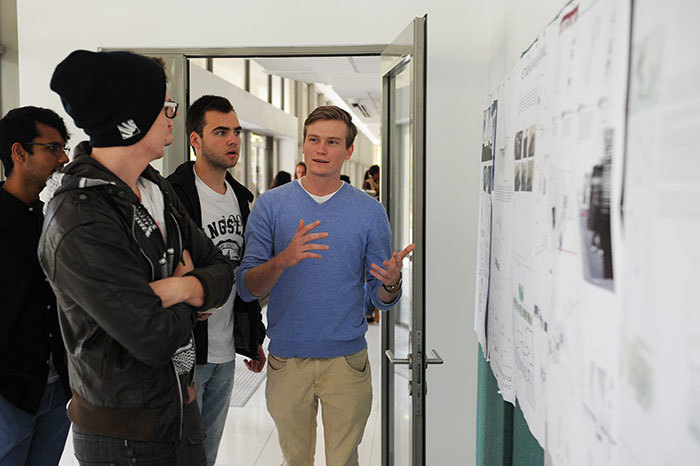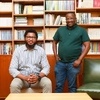Rustenburg Slave Memorial: remembering the past, planning for the future
03 October 2014 | Story by Newsroom
Last November's Rustenburg Memorial Conversations at UCT was an opportunity to consider the implications of the Rustenburg Burial Ground for UCT, a site next to the university's School of Economics Building where the remains of a boundary wall that belonged to a slave burial ground was found in 2007.
This September, students were invited to design a structure that would both commemorate the space as a slave burial ground and link that history to contemporary issues at the university and the broader Cape Town community. In the garden between All Africa House and the new building, a glass pane currently protects a portion of that boundary wall and provides a glimpse into the lives and deaths of those slaves, who are believed to have laboured on farms alongside the Liesbeeck River in the seventeenth and eighteenth centuries.
Dozens of these designs have been on display in the School of Economics Building since Heritage Day, 24 September 2014. From the myriad of designs submitted '“ that included everything from large walk-through structures to more subtle ideas for memorialising the space's history '“ five groups were declared finalists, and the overall winners will have their designs built in that garden.
Students will work with the judging panel to fine-tune their designs before the winning design is announced on Emancipation Day, 1 December 2014.
Connecting UCT to Cape Town '“ and its history
Speaking at the exhibition opening, Deputy Vice-Chancellor Professor Crain Soudien noted the significance of holding the event in September: "We deliberately decided to bring this process to a semi-climax on Heritage Day," said Soudien, who has spearheaded the project since the discovery of the wall in 2007.
"It's really an attempt on the part of the University of Cape Town to understand what it means to be the University of Cape Town. We've spent a great deal of time in the last ten years thinking about this word 'university' but we've now had to juxtapose the word 'university' to its location, Cape Town. What does it mean to be here in Cape Town?"
The memorialisation of the site was an attempt on the university's part to pay respects to the people buried here, "and whose names we do not know", he said.
An ambitious project
Professor Iain Low of the School of Architecture, Planning and Geomatics, described the "ambitious" project's three dimensions: historic narration, spatial transformation, and artistic intervention.
The memorial shouldn't just comprise abstract representations, but should include "some kind of narrative space, because spatial artistic works don't speak of and for themselves", said Low. This was so that people from the broader Cape Town community could visit the site without needing tour guides.
South Africa's heritage domain was a highly contested site, he said, and was generally governed by "notions of whiteness, where legal and economic concerns surface, rather than hidden histories".
This legacy project, Low explained, was "the beginning of something that starts to write back to what we do as designers, as artists, as archaeologists, as historians, to the community that we serve, and do it in a way in which spatial intervention can produce knowledge".
Student winners
The winning student group will be announced on Emancipation Day, 1 December, the day in 1834 that enslaved people in the Cape were emancipated. But the competition was not only about one winner; Soudien hailed the students for their "astonishing" work, saying: "I'd like to declare you all winners!"
"I'd like to thank all of you particularly the students for thinking very hard about how this full history can be brought into a frame here which allows all of us to work with it and to begin to imagine where it could take us," said Soudien.
The five shortlisted groups are (in no particular order):
Team 1: Sadiq Toffa
Team 2: Joe Davidson, Stu Kelly, Rachel Myburgh
Team 3: Alexander Frehse, Lawden Holmes
Team 4: Josephine Dalberg, Mira Friedman, Tao Klitzner, Nikita Schweizer
Team 5: Maashitoh Rawoot, Nicole Seymour, Sebastian Rolando
Story by Yusuf Omar. Image by Michael Hammond.
 This work is licensed under a Creative Commons Attribution-NoDerivatives 4.0 International License.
This work is licensed under a Creative Commons Attribution-NoDerivatives 4.0 International License.
Please view the republishing articles page for more information.










